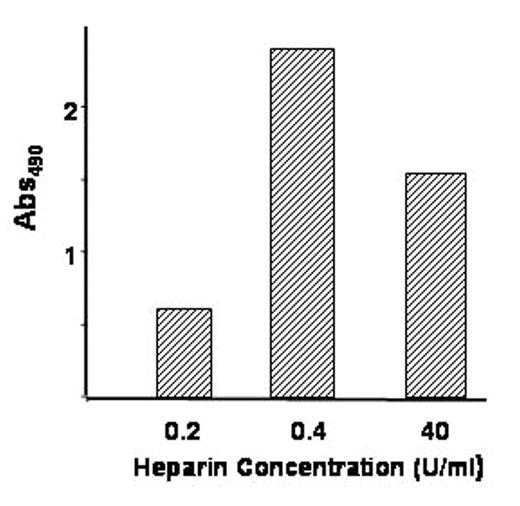Abstract
In heparin-induced thrombocytopenia (HIT), patients receiving heparin develop IgG antibodies that bind complexes formed between heparin and platelet factor 4 (PF4). Most patients are asymptomatic, but some develop life- and limb-threatening arterial or venous thrombosis. We previously described a transgenic mouse model of HIT that demonstrated four factors are necessary and sufficient to recapitulate the clinical manifestations of HIT with thrombosis: heparin, human PF4, a heparin/PF4 antibody, and platelet activation via FcγRIIA. We hypothesize that specific quantitative and qualitative characteristics of heparin/PF4 antibodies determine which patients with HIT will develop thrombosis. Because heparin/PF4 antibodies isolated from patients with HIT are generally polyclonal and heterogeneous, it has been impossible to directly test this hypothesis. We recently developed a novel means of cloning human antibodies, in which we fuse primary human B-cells to a murine cell line that ectopically expresses human telomerase (hTERT) and murine interleukin-6 (mIL-6). This method readily generates heterohybridoma cells that stably secrete human antibodies. We have used this method to clone human heparin/PF4 antibodies from patients with HIT and thrombosis. We identified a patient with clinical HIT, exhibiting a heparin-dependent drop in platelet counts, plasma heparin/PF4 IgG antibodies by ELISA, and a deep venous thrombosis. We fused peripheral blood lymphocytes from this patient to our novel fusion partner cell line, and isolated 2 independent hybridomas that express IgM antibodies that strongly bind heparin/PF4 complexes. We assayed the specificity of the cloned antibodies by testing serial dilutions for heparin/PF4 binding activity by ELISA. Each cloned antibody bound heparin/PF4 with an absorbance >2X background at dilutions that ranged from 1:32–1:64, whereas three negative control antibodies gave no detectable binding at dilutions of 1:2 or greater. cDNA sequencing indicated that both antibodies have the same heavy chain sequences, including a novel CDR3 region, suggesting that the antibodies were derived from post-germinal center memory B-cells rather than from naive B-cells. Using recombinant DNA techniques and ectopic expression in CHO cells, we produced an IgG1 version of one of these antibodies (8E5). By ELISA, the 8E5 IgG1 antibody binds human PF4 at optimal ratio of 10 μg/ml to 0.4 U/ml of heparin (see Figure). We are currently exploring the nature of the 8E5 IgG/heparin/PF4 complex and its platelet activating/thrombotic potential.
Author notes
Corresponding author


This feature is available to Subscribers Only
Sign In or Create an Account Close Modal